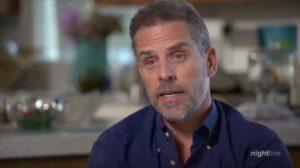The fight against shaming language is a life-and-death mission and vital to helping open opportunities in recovery, medicine and policy—elevating outcomes for all in treatment
By Jennifer Taylor and the entire team of TreatmentMagazine.com
February 4, 2021There were many losers in the chaotic first presidential debate between then-former Vice President Joe Biden and then-President Donald J. Trump. The television audience. America. But one verbal attack launched by the now-former president rose to the fore: the shaming of Joe Biden’s son, Hunter, because of a positive cocaine test that led to his Navy discharge. It was a familiar blow to all of us in the addiction and treatment field.
And its unintended target: the almost 20 million Americans battling a substance use disorder (SUD).
In response, Joe Biden—now the 46th president of the United States—addressed head on the role of stigma and addiction. He supported his son: fully.
“My son, like a lot of people, like a lot of people you know at home, had a drug problem,” Biden said. “He’s overtaken it, he’s fixed it, he’s worked on it, and I’m proud of him.”

The shaming of Hunter Biden didn’t end there. More election-season verbal assaults followed. One news outlet alleged that an FBI-obtained video showed Hunter Biden “smoking crack,” while another story loosely used cruel and shaming terms like “crack binge” in detailing his personal history. Somewhere in the mix, Donald Trump Jr. piled on, using disparaging terms like calling Hunter Biden a “crackhead.”
No one is dismissing the right to cover Hunter Biden as a public figure. What’s at odds is how the media—with the mandate to remain impartial—unintentionally can contribute to stigmatizing people with SUD through the use of inappropriate language.
How we talk about addiction at the national level matters. As in life-and-death matters. It not only negatively impacts people seeking recovery, but it also deeply affects the way we as a nation approach treatment and policy, hindering patients, their loved ones and treatment professionals.
How to Eradicate Stigma in Addiction
It’s time for the language around addiction to change—and journalism must evolve with it.
That’s why we at TreatmentMagazine.com consider the work of Shatterproof, the national nonprofit dedicated to reversing the addiction crisis, essential in helping address stigmatizing language sometimes used in the media when covering addiction. We want to spotlight and help educate how stigmatizing language decreases opportunities for individuals seeking and treatment and recovery. In the process, we want to elevate outcomes in medicine, science, public policy and so many other facets of how we approach addiction in the United States.
Last July, Shatterproof, announced its nationwide strategy, the Movement to End Addiction Stigma. The early-stage initiative is designed to address the discrimination and negative public attitudes and behaviors toward people with addiction that create a barrier to treatment.
For Shatterproof CEO Mendell, It’s Personal
In 2011, Shatterproof founder and CEO Gary Mendell lost his son, Brian, after his eight-year struggle with addiction. But addiction was not the direct cause of death. His son took his own life because of the shame and guilt he experienced due to his addiction, his father says. Mendell has committed to calling out stigma to honor Brian’s memory and try to help other families not have to suffer as his has.
Today, Mendell is leading his organization to work with stakeholders in healthcare, government, criminal justice and the media (including TreatmentMagazine.com) to influence addiction stigma. Despite efforts made by some newsrooms and the AP Stylebook to address stigmatizing language, Mendell believes it’s not enough.
“It’s a step in the right direction, but can we do more? The ramifications of not doing more? There are parents today in a cemetery burying a child. Forever. That could have been prevented if that young man or woman felt better about themselves,” Mendell says. “There’s no question the language being used by the media contributes. It’s not the deciding factor, but it contributes to stigma.”
Mendell points to that moment during the first presidential debate when Biden spoke up for his son as a key step in shifting the national narrative. “Biden’s response absolutely made a message to the public,” he says. “‘So, my son is addicted to drugs. He’s a wonderful son and I love him.’ What a wonderful statement. I listened to that and I cried. I knew when he said that, there would be less families in a cemetery in the coming year.”
What’s Ahead in Our Anti-Stigma Project
You will be hearing a lot more in the next weeks and months, so stay tuned. Under current consideration are: initiatives educating journalism students, raising awareness of terms to use and not use when writing and speaking about addiction and recovery, and rewarding the best journalism that reports on addiction, and many more programs. We are committed to transparently publishing bold goals and publicly tracking and measuring the success—and misses, so we can course correct—of anti-stigma initiatives.
Our mission? Nothing less than creating a better, safer, more healing world where we approach addiction as a treatable disease in which people with SUD receive the same level of compassion and medical care as people with, say, diabetes and heart disease.
Today is a hopeful moment.
We’ll share opportunities for how you can participate as we move forward
This is the first in an ongoing series on addiction stigma. We will examine the use of stigmatizing addiction language in the media, this study showing how it happens, and our interview with Dr. John F. Kelly, whose groundbreaking addiction-language research shows the negative impact stigmatizing language can have on people’s ability to seek treatment.














